How many times have you been in your own home, enjoying the peace and quiet, only to be disturbed by the noise coming from a bathroom? Soundproofing can be an effective way to address this problem – it just takes a bit of time, effort, and know-how. In this blog post, we’ll discuss all the steps necessary for soundproofing a bathroom door. From materials to techniques, we’ll break down what you need to consider for achieving maximum sound reduction and creating a much quieter home environment!
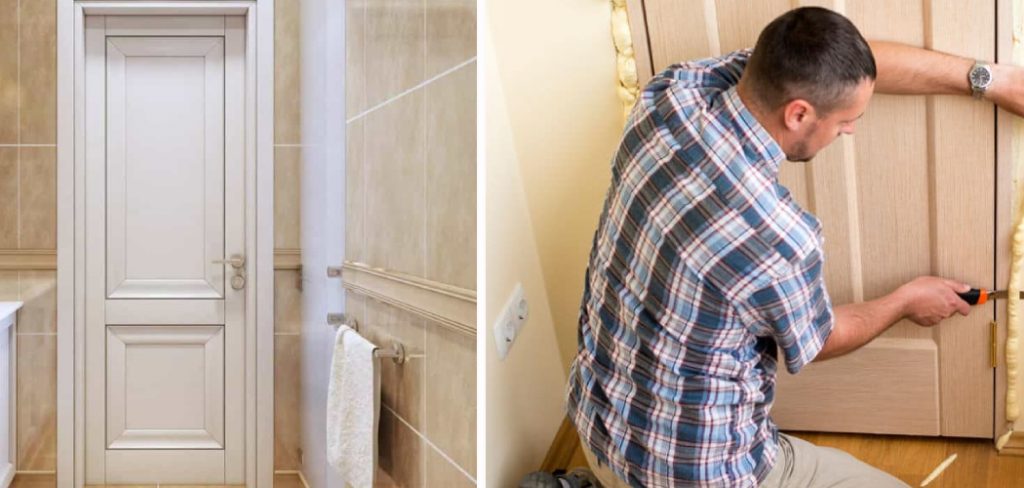
Whether you need to block out loud noises or ensure the contents of your bathroom stay private, soundproofing a door is essential for all homeowners. Knowing how to do this, however, can be difficult—but don’t worry! This blog post will guide you on how to soundproof a bathroom door through the entire process step-by-step and provide helpful tips that will not only help reduce noise in your bathroom but also allow you to achieve optimal soundproofing results.
Why May You Want to Soundproof a Bathroom Door?
There are many reasons why you may want to soundproof your bathroom door. Such as:
1. To Reduce the Noise of Running Water
One of the main reasons you may want to soundproof your bathroom door is to reduce the noise of running water from the shower or bathtub. This can be especially important if you have a shared wall with another apartment, as running water can easily travel through walls and cause disturbance for those on the other side.
2. To Muffle Noises from People Using the Bathroom
Another common reason for wanting to soundproof a bathroom door is to muffle noises from people using the bathroom. This could be anything from the sound of footsteps to humming or singing while showering. Soundproofing your bathroom door can help muffle these noises and provide some much-needed peace and quiet in your home.
3. To Keep Out Unwanted Noises
Finally, soundproofing your bathroom door can also help keep out unwanted noises from outside the home. This could be anything from traffic noise to construction sounds or even loud music coming from a neighbor’s house. Soundproofing your bathroom door can help block these types of external noises and provide some additional privacy for you and your family.
Now that you know why soundproofing a bathroom door is important, let’s take a look at some of the ways to do this effectively.
10 Ways Of How to Soundproof a Bathroom Door
1. Use Weatherstripping
Weatherstripping is a great way of soundproofing a bathroom door. It consists of rubber, foam, or vinyl strips that can be installed around the edges of the door frame to seal any gaps and reduce noise coming in and out.
2. Install Soundproof Curtains
A soundproof curtain hung over the door can help reduce noise coming in and out of the bathroom. Look for curtains made from thick fabrics such as velvet or heavy cotton to block sound from entering or leaving.
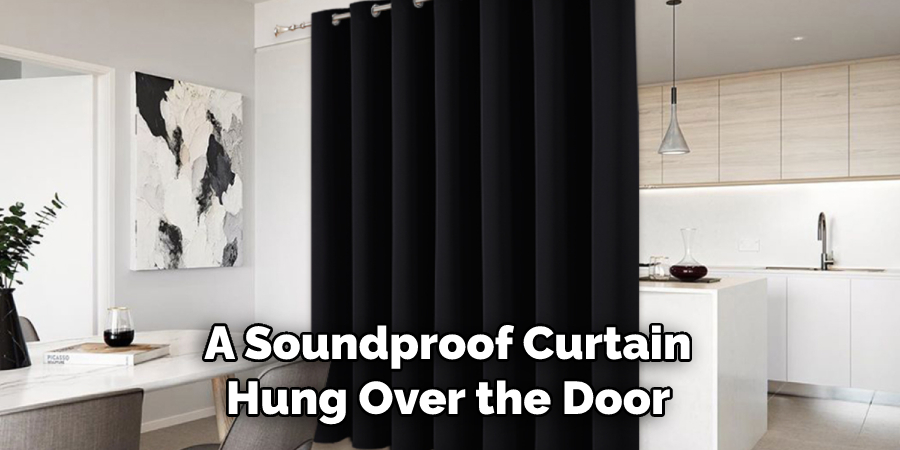
3. Install a Door Sweep
Installing a door sweep is another great way of soundproofing a bathroom door. This is an adjustable strap that can be installed at the bottom of the door to seal any gaps and reduce noise from entering or leaving. But make sure to measure the gap correctly so that the door sweep fits snugly and securely.
4. Use Door Seals
Door seals are strips of rubber or foam that can be installed around the edges of a door frame, similar to weatherstripping. They create an extra layer of soundproofing material and help reduce the noise coming in or out of the bathroom.
5. Hang a Soundproof Blanket
Hanging a soundproof blanket over the door is an effective way to reduce noise coming in and out of the bathroom. Look for blankets made from thick materials such as denim or canvas, which will help absorb sound better than thinner fabrics.
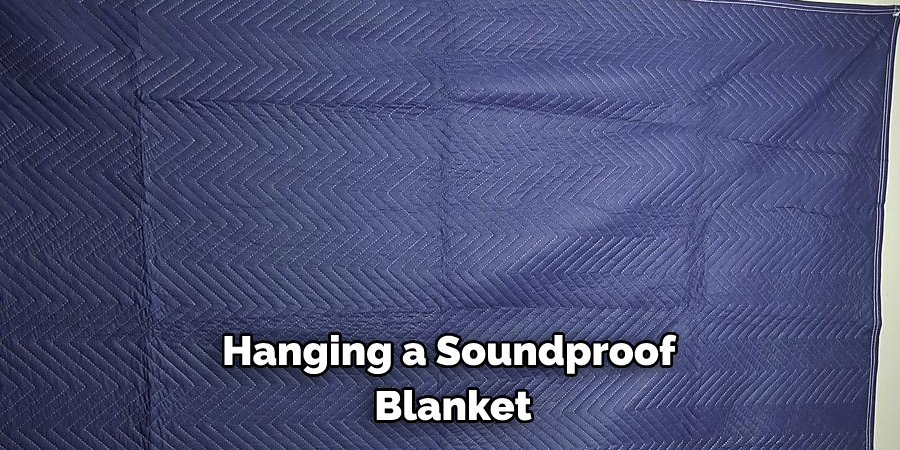
6. Add Insulation
Adding insulation to the walls and ceiling of your bathroom is another great way of soundproofing the room. This will help reduce noise from entering or leaving through the walls and ceilings. Also make sure to insulate any vents or air ducts in the bathroom too.
7. Install Soundproof Foam Panels
Soundproof foam panels can be installed on the door and around the edges of the frame to help absorb noise coming in or out. Make sure to measure the door and buy panels that will fit snugly so they can do their job effectively.
8. Install a Door Sound Barrier Mat
A sound barrier mat is a thick rubber or foam wedge that can be installed on the inside of the door, between the frame and the wall. This will help reduce noise from entering or leaving and can provide a noticeable reduction in sound.
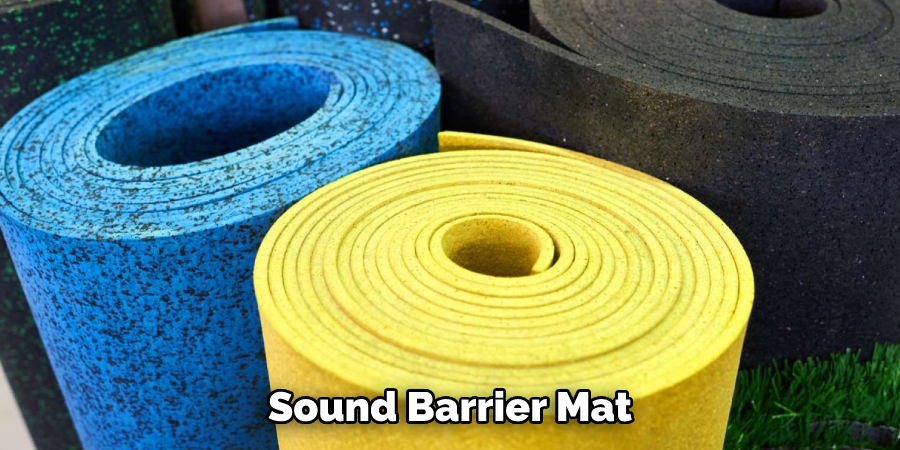
9. Install Door Gaskets
Door gaskets are strips of rubber or foam that can be installed around the edge of a door frame. They create an extra layer of soundproofing material and help reduce noise from entering or leaving. Make sure to measure the door frame correctly, so the gaskets fit snugly and securely.
10. Use a Door Soundproofing Kit
If you don’t want to go through the hassle of buying and installing each soundproofing material individually, you can opt for a door soundproofing kit. These usually come with everything you need to effectively soundproof your bathroom door, so all you have to do is follow the instructions.
By using these tips, you’ll be able to effectively soundproof your bathroom door and keep the noise out.
Frequently Asked Questions
What Precautions Should I Take Before Soundproofing a Bathroom Door?
Before embarking on soundproofing your bathroom door, it is essential to check for potential structural problems. If there are any leaks or damp patches in the walls or around the frame of the door, these should be fixed before attempting to soundproof it. Furthermore, if there are any cracks or gaps in the frame of the door, these should also be filled in first.
What Materials Can I Use to Soundproof a Bathroom Door?
When soundproofing your bathroom door, there are several materials you can use. These include mass-loaded vinyl (MLV), acoustic foam panels, and double-glazed glass. MLV is a material that can absorb sound waves and reduce the noise level in your bathroom significantly. Acoustic foam panels are another great choice, as they have sound-absorbing properties and will also help to improve the insulation of your door. Lastly, if you want to completely block out noise, double-glazed glass can provide an effective sound barrier.
Is Soundproofing a Bathroom Door Difficult?
No, soundproofing a bathroom door is not difficult. Depending on the material you choose to use, the installation process can vary slightly, but generally speaking, it is fairly straightforward. If you do decide to go ahead with double-glazed glass, make sure that you follow the manufacturer’s instructions closely and that you use a professional to complete the installation.
Are There Any Other Ways I Can Reduce Noise in My Bathroom?
Yes, there are other ways to reduce noise in your bathroom. If you don’t want to soundproof your door, then you can install acoustic ceiling tiles or wall panels to reduce reverberation and echo. You can also add a rug or area rug to the bathroom floor for extra sound absorption. Lastly, you can install a white noise machine or fan in the bathroom to mask any unpleasant sounds.
Are There Any Drawbacks of Soundproofing a Bathroom Door?
There are some potential drawbacks to soundproofing a bathroom door. Firstly, soundproofing materials can be expensive, so it may not be cost-effective for everyone. Secondly, some of the materials used to soundproof doors are thick and heavy which could make them difficult to open or close. Lastly, if you install double-glazed glass, it may reduce the amount of natural light coming into the bathroom.
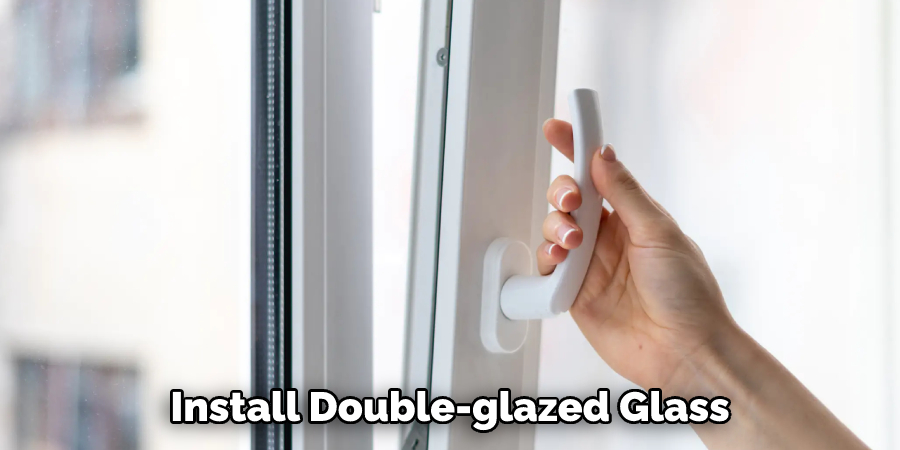
Overall, soundproofing a bathroom door is an effective way to reduce noise and improve insulation in the room. With the right materials, you can create a peaceful and comfortable environment for everyone in the home. However, it is important to keep in mind that there may be some drawbacks as well, so make sure that you consider them before making a decision.
Conclusion
Soundproofing a bathroom door is an important process that can significantly reduce noise entering or leaving the space, allowing for more privacy and relaxation. With the right materials like foam insulation, mass-loaded vinyl, or acoustic sealant, you’ll be able to properly insulate your door, so it won’t only look great, but also help contain sound within the room.
It’s a relatively simple project with a big payoff — peace and quiet in your very own bathroom. Now you know how to soundproof a bathroom door. Don’t be afraid to take on this project as it is within reach of nearly anyone who has basic carpentry skills and access to the right supplies. With a little bit of effort, you can reduce outside noise in no time flat!